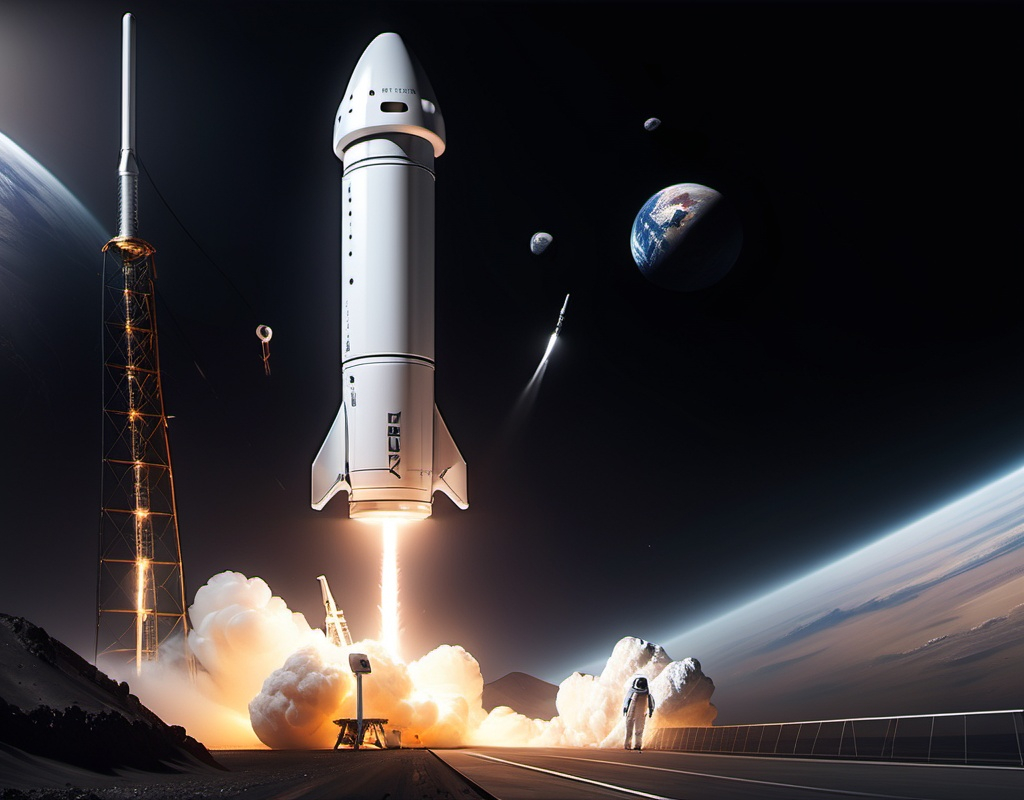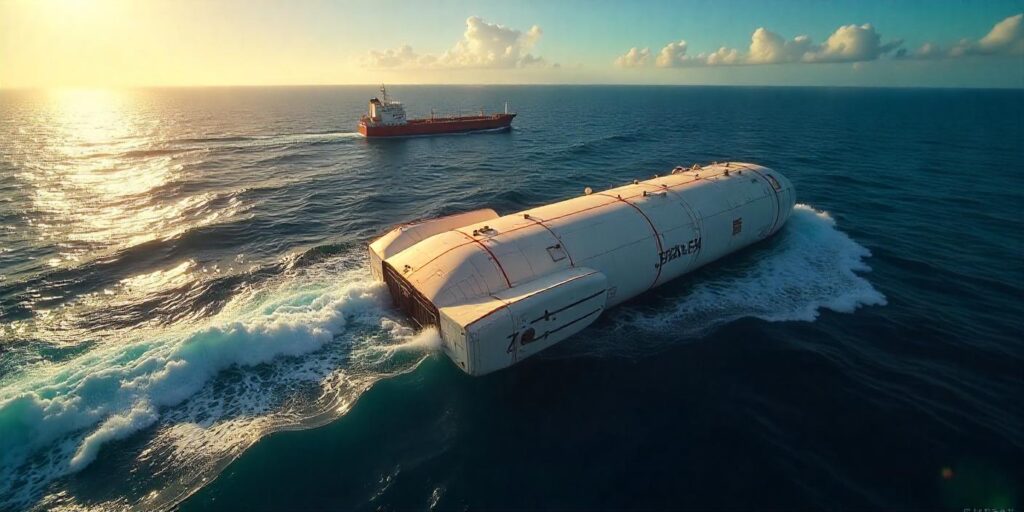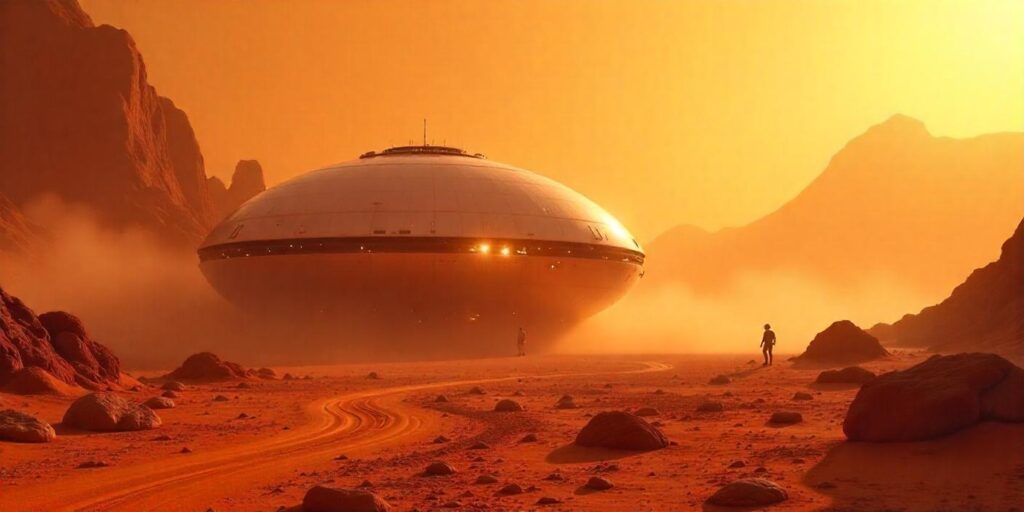SpaceX or Space Exploration Technologies Corp., has become a symbol of innovation in the aerospace industry since its inception in 2002. Founded by entrepreneur Elon Musk, the company has achieved remarkable milestones that have reshaped the landscape of space travel, reduced costs, and ignited a new era of exploration. In this comprehensive blog post, we will delve into origins, key achievements, technological innovations, missions, and its vision for the future of space.

SpaceX Origins and Founding
SpaceX was founded in March 2002 by Elon Musk, a visionary entrepreneur with a background in technology and engineering. Musk’s primary motivation was to reduce space transportation costs and make space exploration more accessible. He was inspired by the potential of space travel to ensure the long-term survival of humanity. To this end, he set ambitious goals, including the colonization of Mars and the development of reusable rocket technology.
In its early years, faced significant challenges. The company’s initial goal was to create a series of rockets capable of delivering payloads to orbit at a fraction of the cost of traditional methods. This ambitious vision required both substantial financial investment and technological innovation.
SpaceX Key Achievements and Milestones
1. Falcon 1: The First Privately Developed Liquid-Fueled Rocket to Reach Orbit
SpaceX’s journey to space began with the Falcon 1, a small, partially reusable rocket designed to carry payloads to low Earth orbit. After several failed attempts, achieved a significant breakthrough on July 4, 2006, when Falcon 1 became the first privately developed liquid-fueled rocket to reach orbit. This success marked the beginning of SpaceX’s ascent in the aerospace industry.
2. Falcon 9: Reusability and Cost Reduction
The Falcon 9 rocket, introduced in 2010, was a game-changer for space travel. It was designed with the goal of reusability in mind, featuring a first stage that could return to Earth for refurbishment and reuse. This innovation aimed to drastically reduce the cost of launching payloads into space.

The first successful landing of the Falcon 9’s first stage occurred on December 21, 2015, a historic moment that demonstrated the viability of reusable rocket technology. Since then, has continued to refine and improve the Falcon 9, achieving numerous successful landings and significantly lowering the cost of access to space.
3. Falcon Heavy: The Most Powerful Operational Rocket
In February 2018, SpaceX launched the Falcon Heavy, the most powerful operational rocket in the world at the time. With its ability to lift heavy payloads to orbit, the Falcon Heavy represents a significant advancement in space launch capabilities. The maiden flight of the Falcon Heavy was notable for its successful demonstration of the rocket’s ability to carry large payloads, including Elon Musk’s personal Tesla Roadster, which was sent into space as a test payload.
4. Crew Dragon: Revolutionizing Human Spaceflight
SpaceX’s Crew Dragon spacecraft, part of NASA’s Commercial Crew Program, marked a new era in human spaceflight. On May 30, 2020, the Crew Dragon launched with NASA astronauts Bob Behnken and Doug Hurley aboard, making it the first commercially built and operated spacecraft to carry astronauts to the ISS. This historic mission demonstrated SpaceX’s capability to support crewed space missions and marked the first crewed launch from U.S.
5. Starship: The Next Frontier
The Starship spacecraft, currently under development, represents SpaceX’s vision for the future of space travel. Designed to be a fully reusable spacecraft capable of carrying both crew and cargo to destinations beyond Earth’s orbit, Starship is central to SpaceX’s plans for interplanetary exploration. The spacecraft is intended to facilitate missions to the Moon, Mars, and beyond.

Starship’s design includes a massive stainless steel structure, with a focus on reusability and efficiency. SpaceX has conducted several test flights of Starship prototypes, with the goal of refining the technology and achieving full operational capability. The success of Starship is critical to SpaceX’s long-term vision of enabling human colonization of Mars and making space travel a routine part of human life.
SpaceX Technological Innovations
SpaceX’s success can be attributed to its commitment to technological innovation. Several key technologies have been instrumental in shaping the company’s achievements:
1. Reusable Rocket Technology
The development of reusable rocket technology is perhaps SpaceX’s most significant innovation. By designing rockets that can return to Earth and be refurbished for future launches, SpaceX has dramatically reduced the cost of access to space. The ability to land and reuse rocket stages has paved the way for more frequent and affordable space missions.
2. Advanced Propulsion Systems
SpaceX has developed advanced propulsion systems to enhance the performance and efficiency of its rockets. The Merlin engines used in the Falcon 9 and Falcon Heavy rockets are designed for high efficiency and reliability. Additionally, the Raptor engines powering the Starship spacecraft represent a leap forward in rocket propulsion technology, utilizing methane and liquid oxygen for greater performance and reusability.
3. Vertical Landing Technology
The vertical landing technology employed by SpaceX has revolutionized rocket recovery. By using grid fins and a combination of rocket propulsion and aerodynamic control, SpaceX has achieved successful landings of the Falcon 9’s first stage on both land and drone ships at sea. This technology is essential for the reusability of rockets and the reduction of launch costs.
4. In-Orbit Refueling
SpaceX is exploring in-orbit refueling as a means to extend the range and capabilities of its spacecraft. In-orbit refueling involves transferring fuel from one spacecraft to another while in space, enabling missions to more distant destinations. This technology is a critical component of SpaceX’s plans for interplanetary travel and exploration.
SpaceX Missions and Collaborations
SpaceX has undertaken numerous missions and collaborations that highlight its role as a key player in space exploration:

1. International Space Station (ISS) Resupply and Crew Missions
SpaceX has been a vital partner in supporting the ISS through its Cargo Dragon and Crew Dragon missions. The Cargo Dragon spacecraft has been used for resupply missions, delivering essential supplies and scientific experiments to the ISS. The Crew Dragon has facilitated crewed missions, ensuring a continuous human presence on the space station.
2. Mars Exploration
SpaceX’s long-term vision includes the exploration and colonization of Mars. The development of the Starship spacecraft is central to this goal. SpaceX has outlined plans for sending uncrewed missions to Mars to gather data and prepare for future crewed missions. The company envisions establishing a self-sustaining human settlement on Mars, paving the way for humanity’s expansion beyond Earth.
3. Lunar Exploration
SpaceX is also involved in lunar exploration efforts. The company’s Starship spacecraft has been selected by NASA to serve as a lunar lander for the Artemis program, which aims to SpaceX return humans to the Moon. SpaceX’s role in the Artemis program underscores its commitment to advancing space exploration and supporting NASA’s goals for lunar and deep space missions.
Vision for the Future
SpaceX’s vision for the future extends far beyond its current achievements. The company’s goals include:
1. Colonization of Mars
The development of the Starship spacecraft is a key component of this vision. aims to establish a human settlement on Mars, creating a self-sustaining colony that can support life and contribute to the long-term survival of humanity. Achieving this goal requires overcoming numerous technical and logistical challenges, but SpaceX’s commitment to innovation and exploration drives its efforts.
2. Making Space Travel Routine
envisions a future where space travel becomes a routine part of human life. By reducing the cost of access to space and developing reusable rocket technology, aims to make space travel more accessible to a broader range of people. The company’s efforts to improve rocket performance, develop new technologies, and expand its capabilities contribute to this vision.
3. Advancing Space Technology
The development of the Raptor engines, advancements in rocket propulsion, and innovations in spacecraft design are all part of the company’s commitment to advancing space technology. SpaceX’s focus on research and development ensures that it remains at the forefront of aerospace innovation.
Challenges and Criticisms
Despite its successes, SpaceX has faced challenges and criticisms:

1. Technical and Safety Challenges
SpaceX has encountered technical and safety challenges throughout its history. Rocket failures, such as the early Falcon 1 launch failures, have tested the company’s resilience. Ensuring the safety and reliability of spacecraft and rockets is a continuous challenge, and SpaceX has implemented rigorous testing and improvements to address these issues.
2. Environmental Concerns
The environmental impact of rocket launches has raised concerns. Rocket launches produce emissions and contribute to atmospheric pollution. SpaceX has made efforts to mitigate these impacts through technological advancements, such as using cleaner propellants and optimizing rocket performance.
3. Competitive Landscape
The aerospace industry is highly competitive, with other companies and government agencies pursuing similar goals. SpaceX faces competition from established players like Boeing and Lockheed Martin, as well as emerging companies in the commercial space sector. Staying ahead in this competitive landscape requires constant innovation and adaptation.
Conclusion
SpaceX has made an indelible mark on the aerospace industry, revolutionizing space exploration and shaping the future of humanity’s journey to the stars. From its early successes with the Falcon 1 to its groundbreaking achievements with the Falcon 9, Falcon Heavy, and Crew Dragon, SpaceX has demonstrated
SpaceX Success Stories: Pioneering the New Age of Space Exploration
SpaceX, officially known as Space Exploration Technologies Corp., has emerged as a trailblazer in the aerospace industry since its inception in 2002. Founded by Elon Musk, the company’s mission to reduce space transportation costs and make space travel more accessible has led to a series of groundbreaking achievements. These successes have not only advanced technology but have also inspired a new generation of space enthusiasts and innovators. This blog post will explore some of SpaceX’s most notable success stories, highlighting the milestones that have cemented its place in space history.
1. The Dawn of SpaceX: Falcon 1’s Historic Flight
SpaceX’s journey to becoming a leading aerospace company began with the Falcon 1, a small, partially reusable rocket designed to carry payloads into orbit. The Falcon 1’s maiden flight on March 24, 2006, ended in failure, marking a challenging start for the company. However, persistence paid off. On July 4, 2006, SpaceX achieved a historic milestone when the Falcon 1 became the first privately developed liquid-fueled rocket to reach orbit. This success was a testament to SpaceX’s resilience and innovation.
The achievement of Falcon 1 was more than just a technical success; it represented a shift in the aerospace industry. Until then, space access had been dominated by government agencies and established aerospace companies. SpaceX’s accomplishment demonstrated that private companies could develop reliable space technology, paving the way for future commercial space endeavors.
2. The Falcon 9 and the Era of Reusability
One of SpaceX’s most significant contributions to space technology is the development of the Falcon 9 rocket, which was first launched in 2010. Designed with a focus on reusability, the Falcon 9 aimed to reduce the cost of space travel by allowing the rocket’s first stage to return to Earth and be refurbished for future missions. This concept was revolutionary, as it promised to lower the price of launching payloads into orbit.
The Falcon 9’s reusability became a reality on December 21, 2015, when SpaceX successfully landed the rocket’s first stage on a drone ship in the Atlantic Ocean. This historic landing demonstrated the feasibility of reusable rockets and marked a turning point in the space industry. Since then, SpaceX has achieved numerous successful landings of Falcon 9’s first stage, both on land and at sea, further solidifying its commitment to cost-effective and sustainable space travel.
3. Falcon Heavy: Breaking Records and Pushing Boundaries
In February 2018, SpaceX launched the Falcon Heavy, the most powerful operational rocket in the world at the time. The Falcon Heavy’s maiden flight was a milestone not only for SpaceX but for the entire aerospace industry. With its ability to lift heavy payloads into orbit, the Falcon Heavy represented a significant advancement in rocket technology.
The Falcon Heavy’s first flight was notable for its success and its demonstration of the rocket’s capabilities. The launch featured a unique test payload: Elon Musk’s personal Tesla Roadster, which was sent into space with a mannequin named “Starman” at the wheel. The spectacle of a car orbiting the Sun captured the imagination of people around the world and showcased SpaceX’s ability to push the boundaries of space exploration.
4. Crew Dragon: A New Era of Human Spaceflight
SpaceX’s Crew Dragon spacecraft, part of NASA’s Commercial Crew Program, marked a new era in human spaceflight. Designed to transport astronauts to and from the International Space Station (ISS), the Crew Dragon represented a significant leap forward in space technology and commercial spaceflight.
On May 30, 2020, the Crew Dragon launched with NASA astronauts Bob Behnken and Doug Hurley aboard, making history as the first commercially built and operated spacecraft to carry astronauts to the ISS. The mission, known as Demo-2, was a landmark achievement for both SpaceX and NASA, demonstrating the capability of private companies to support crewed space missions and marking the first crewed launch from U.S.
The successful completion of the Demo-2 mission paved the way for regular crewed missions to the ISS, with Crew Dragon becoming a key component of NASA’s efforts to maintain a continuous human presence in space.
5. Starlink: Expanding Global Internet Access
In addition to its achievements in rocket technology and human spaceflight, SpaceX has embarked on an ambitious project to provide global internet access through its Starlink satellite constellation. The Starlink project aims to deploy a network of low Earth orbit (LEO) satellites to provide high-speed, low-latency internet access to underserved and remote areas around the world.
Since the first Starlink satellites were launched in May 2019, SpaceX has deployed thousands of satellites, with more planned for the future. The project has the potential to revolutionize internet connectivity, offering reliable internet access to regions that previously had limited or no connectivity. Starlink represents a bold step towards bridging the digital divide and improving global communications.
6. The Raptor Engine: Advancing Rocket Propulsion
The development of the Raptor engine is another significant achievement for SpaceX. The Raptor is a full-flow staged combustion rocket engine designed to power the Starship spacecraft, which is central to SpaceX’s vision for interplanetary travel and colonization of Mars. The Raptor engine utilizes methane and liquid oxygen as propellants, offering greater efficiency and performance compared to traditional rocket engines.
The Raptor engine represents a major advancement in rocket propulsion technology, with its design focusing on high efficiency, reusability, and scalability. The successful development and testing of the Raptor engine are crucial for SpaceX’s goals of enabling human missions to the Moon, Mars, and beyond.
7. In-Orbit Refueling: Extending Space Missions
SpaceX is also pioneering the technology of in-orbit refueling, which has the potential to extend the range and capabilities of space missions. In-orbit refueling involves transferring fuel from one spacecraft to another while in space, enabling spacecraft to travel longer distances and carry out more ambitious missions.
The development of in-orbit refueling is a key component of SpaceX’s plans for deep space exploration. By enabling spacecraft to refuel while in orbit, SpaceX aims to support missions to the Moon, Mars, and other destinations beyond Earth’s orbit. This technology is essential for achieving the company’s vision of making space travel more routine and expanding humanity’s presence in space.
8. The Starship Program: Colonizing Mars and Beyond
The Starship spacecraft is central to SpaceX’s long-term vision of colonizing Mars and making space travel a routine part of human life. Designed to be a fully reusable spacecraft capable of carrying both crew and cargo, Starship represents the next generation of space exploration technology.
The development of Starship has involved numerous test flights and iterations, with the goal of refining the spacecraft’s design and performance. The spacecraft’s massive stainless steel structure, combined with advanced propulsion systems, aims to facilitate missions to the Moon, Mars, and beyond. Achieving the full operational capability of Starship is a critical step toward SpaceX’s ambitious goal of establishing a human settlement on Mars and expanding humanity’s reach into the cosmos.
9. Collaboration with NASA and International Partners
SpaceX’s success is also marked by its collaborations with NASA and other international partners. The company has played a crucial role in supporting NASA’s efforts to maintain a continuous human presence on the ISS, providing resupply missions through the Cargo Dragon spacecraft and crewed missions through the Crew Dragon spacecraft.
In addition to its partnership with NASA, SpaceX has collaborated with other space agencies and organizations around the world. These collaborations include supporting missions for international scientific research, launching satellites for various countries, and contributing to global space exploration initiatives.
10. The Impact of SpaceX’s Success
SpaceX’s success has had a profound impact on the aerospace industry and space exploration. The company’s achievements have demonstrated that private companies can play a leading role in space technology and exploration, challenging traditional notions of space access and paving the way for new opportunities.
The development of reusable rocket technology, advancements in propulsion systems, and innovative projects like Starlink and Starship have inspired other companies and organizations to pursue their own space-related goals. SpaceX’s success has also captured the public’s imagination, fostering interest in space exploration and encouraging a new generation of scientists, engineers, and space enthusiasts.
Conclusion
SpaceX’s success stories are a testament to the power of innovation, perseverance, and vision. From the historic flight of the Falcon 1 to the development of the Falcon 9, Falcon Heavy, and Crew Dragon, SpaceX has achieved milestones that have reshaped the aerospace industry and advanced the frontiers of space exploration.
The company’s ambitious goals, including the colonization of Mars and the expansion of global internet access through Starlink, reflect its commitment to making space travel a routine part of human life and improving the quality of life on Earth. As SpaceX continues to push the boundaries of space technology and exploration, its success stories will serve as a source of inspiration and a reminder of the limitless possibilities.
